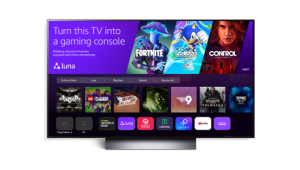Internet, Indies Get Cozy at Sundance Film Festival
The annual event in Park City, Utah is one of several important festivals at which filmmakers, studio executives, and distributors try to connect. Short subjects have traditionally been vehicles for aspiring filmmakers to market their talents to Hollywood, but this year the more than 50 shorts themselves were hot properties as filmmakers cut deals with Internet buyers, many of whom intend to show them on the Net. The process bypasses a time-honored distribution system, and clearly indicates a new direction for the film industry—some of whose major players are already looking ahead at the potential of the Internet.
Short films are an ideal format for the Internet, which, as presently configured, is a short-attention-span medium. Most people lack the broadband connections necessary for glitch-free video streaming, and have no patience for the lengthy download times needed to view longer features. Technical obstacles will be overcome, however, and didn't dampen enthusiasm in Park City. "The Internet is great for filmmakers," said Skip Paul of Ifilm. "It's a breakthrough. It's not the old, difficult audition process. If their film is good, there's immediate exposure for it." Paul hopes his site becomes an all-purpose destination for those who make the films and those who love to watch them.
A recreational vehicle belonging to AtomFilms cruised the festival, letting filmmakers drop off videotapes of their works for viewing by company executives. The standard deal AtomFilms offers filmmakers is an up-front payment of $500 to $1000, followed by a percentage of revenues if the company succeeds in placing their movies with buyers such as TV networks or airlines. AtomFilms' founder, Mika Salmi, says the most successful of the 800 shorts on his roster have brought in about $100,000.
The gold-rush atmosphere comes in the wake of the unprecedented success of The Blair Witch Project, a low-budget independent film that last year pulled in more than $140 million at the box office. Much of the film's success was attributed to word-of-mouth promotion and hype on the Internet. One result: companies with names like ReelUniverse.com, GoodStory.com, ReelPlay.com, and Entertaindom.com went all-out hustling at the festival. "It's sort of like the Beatles coming to America," said Paramount Classics' David Dinerstein. "Everyone wants to be a part of it." Festival co-director Geoffrey Gilmore said, "Nobody wants to miss the boat."
The message hasn't been lost on major studios and distributors, either. "Hollywood has really woken up to the fact that the Internet exists and can be used as a tool," Oliver Eberle, head of ShowBizData.com, told Amy Wallace of the L.A. Times. The former movie producer created his film industry tracking-and-database site to "level the playing field for access to high-end Hollywood information." In addition to Internet hysteria, 17 digital films—as opposed to celluloid—were shown at Sundance, an unprecedented sampling of what the industry still regards as new technology. "That's never been done before," said Gilmore, acknowledging the evolving nature of the festival. Video rental chains Blockbuster and Hollywood Video had buyers at Park City, who purchased dozens of films to take direct to video—a potential bonanza for independent filmmakers, who typically go deep into debt producing their own works.




















































